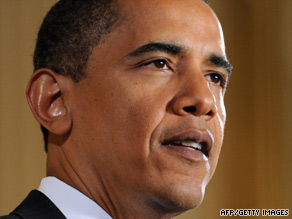Little did Colonel Patrick Ferguson know when he issued his famous broadside that he was writing his own death warrant and signaling the beginning of the end to Britain's rule over this country.
He did everything right, strictly by the book as he had learned in British officer's school. But at the end of the day he lay dead surrounded by most of his men. And all because he underestimated the furor of the Overmountain Men when they learned of his insults. History book version here: http://www.tngenweb.org/revwar/kingsmountain/ferguson.html And my ancestor, Martin Gambill, was largely responsible for getting the word out. And often when confronted by some unpleasant duty I think of him and how easy my way of life is compared to his of danger and sacrifice and I am both proud and ashamed. I hope this inspires others to do their duty, because America is once again under attack.

The Revolutionary War and Martin Gambill's Ride
Much is written on the internet about the ride of Martin Gambill prior to the Battle of King's Mountain, which was the true turning point of the Revolutionary War. We have all read Longfellow's poem about the midnight ride of Paul Revere, but few have read of a much longer ride, that of Martin Gambill. I felt that was somewhat unfair, so I decided to compose a poem about Martin Gambill's ride. First, to set the stage, let me explain a bit about the times. Militias existed in many areas. These Militias worked in concert with the Continental Forces commanded by General Washington and others. These forces were the "home guard" much like the National Guard of our times. According to what I have read, the British General Cornwallis had much of his army near present day Charlotte, NC. He wanted to move North to either flank, or come behind Washington's Continental Troops, who were not having much success battling Clinton's forces in New York. He was somewhat afraid of the mountain Militias who could be a real thorn in his side once he began his northward march. Cornwallis selected a Major Patrick Ferguson to neutralize this threat from the mountain Militias. The mountain Militia leaders were expecting Ferguson, and had devised an early warning system. Brush piles were made on key, higher mountain tops. If Ferguson was seen moving west, fires would be lit to warn of his advance. It just so happens that Colonel Shelby from Tennesse had called many of the militia leaders to a meeting at the home of Colonel John Sevier (later an organizer and governor of the state of Franklin in NE Tennesse) near present day Boone, NC. As the meeting was in progress, the leaders saw the signal fires lit on distant peaks. Ferguson had begun his march. Several of the Virginia leaders were not present. (Captain Enoch Osborn, and Colonel Campbell to name two) In a day with no phone or telegraph, and very poor roads, it was necessary for a rider to be dispatched to warn the Virginia Militia leaders. Martin Gambill volunteered for this duty. In 24 hours he rode over 100 miles of poor trails, crossed rivers and creeks, and lost at least 3 horses to exhaustion. He lost one horse as he crossed the New River where Captain Enoch Osborn was plowing a field. Captain Osborn sent the exhausted rider up to the house for breakfast, while he removed Martin's saddle and placed it on one of the plow horses. Martin continued up the New River to the Mouth of the Fox Creek, which he followed upstream, and through Comer's Gap eventually to the Holston River, and downstream to Colonel Campbell. Martin's remarkable ride enabled the Militias to meet in 7 days at Sycamore Shoals in Ashe County, NC. The mountain Militias went on to join Colonel Cleveland, and Major Winston near the present day town of Morganton, NC. From there they marched southward to meet Ferguson's army, which turned tail and headed back toward Charlotte, and the safety of Cornwallis' larger force. Ferguson decided to deploy his troops on King's Mountain, where he would have the advantage of defending the high-ground. In the battle, the mountain men were victorious, killing 500 or so of Feguson's troops in the first two hours of battle. This victory changed the plans of Cornwallis, and perhaps changed the course of history.
Read the Poem Here:http://www.graysonosbornes.com/17.html
Martin Gambill, who married a Miss Nall, was one of the first settlers of the county on New River, in the eastern part. He was a true patriot in the days of the Revolution. Colonel Ben Cleveland sent a letter to him by a messenger to carry to Col. William Campbell. He went to Enoch Osborne, who lived on New River, near the mouth of Bridle Creek, Va., to borrow a horse. Esquire Enoch Osborne took the harness off of his horse, where he was plowing, and loaned to him to ride to Washington County, Va. Colonel Campbell, in compliance with the request, came with three hundred and fifty men and joined Cleveland, McDowell, Lenoir and others to meet Col. Ferguson the British commander of English and Tories.
Foot Prints on the Sands of Time: A History of Southwestern Virginia and Northwestern North Carolina Dr. A. B. Cox
Originally published by The Star Pub. Co. Print, Sparta, N.C. Aug. 1900.
Related:
http://www.theamericanrevolution.org/battles/bat_kmtn.asp
© Janet Crain
Click here to view all recent Sarah Palin in 2012 posts






































